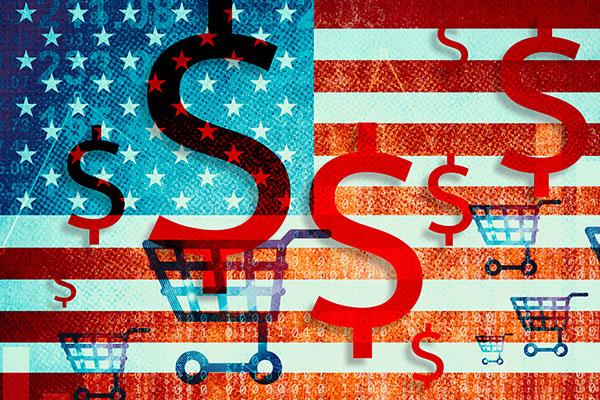Bond Watch: US inflation drop sparks market rally
Sam Benstead breaks down the latest news affecting bond investors.
14th June 2024 12:30
by Sam Benstead from interactive investor

Welcome to interactive investor’s ‘Bond Watch’ series, covering the latest market and economic news – as well as analysis – that is relevant to bond investors.
Our goal is to make the notoriously complicated world of bond investing simpler, by analysing the week’s most important news and distilling it into a short, useful and accessible article for DIY investors.
- Invest with ii: How Bonds & Gilts work | Tax Rules for Bonds & Gilts | Buy Bonds
American inflation falls
Stock and bond markets cheered a greater-than-expected drop in US inflation this week.
Prices rose 3.3% in the year to May, lower than economists’ forecasts of 3.4%. Core inflation, which strips out volatile food and energy costs, was 3.4%.
In response, bond yields fell and shares rose around the world as investors priced in a greater likelihood of an interest rate cut in America in September.
Preston Caldwell, chief US economist for Morningstar, said: “The Federal Reserve is now calling for only one rate cut in 2024. But it’s likely their cautious inflation forecast will surprise to the downside, leading to two or more cuts this year.”
What the US does is often followed by other central banks around the world. So a more optimistic outlook for US interest rates should make it easier for the Bank of England to cut rates too.
This is why gilt yields fell and prices rose in the wake of the news. The UK 10-year bond yields 4.2%, down from 4.3% last week.
- Benstead on Bonds: should investors be worried about a Labour government?
- DIY Investor Diary: why I’m ‘all in’ on this volatile gilt
Is the Bank of England about to cut interest rates?
Alexandra Ivanova, fixed income portfolio manager at Invesco, believes that the Bank of England will cut interest rates earlier than the market expects, and could even cut two or three times this year. She says this makes shorter gilts more attractive, but she has also been trading longer-date gilts, which can be very volatile.
Nevertheless, it is unlikely that UK interest rates will be cut ahead of the general election when the Bank of England meets on 20 June.
Ivanova says that the biggest risk to gilt markets is that inflation proves stickier than expected across the globe.
- Benstead on Bonds: the four gilts investors are backing – should you too?
- Sign up to our free newsletter for investment ideas, latest news and award-winning analysis
Wage data this week seems to point in this direction. UK wages grew 5.9% in the three months to April, despite a slowing jobs market. However, inflation continues to slow, now at just 2.3% in the UK.
Ivanova told me: “Our base case is that inflation is sticky but trending down. But there is a chance we are stuck with higher inflation for longer. Service inflation I am a little worried about, such as in leisure, insurance pricing, medical services.”
These articles are provided for information purposes only. Occasionally, an opinion about whether to buy or sell a specific investment may be provided by third parties. The content is not intended to be a personal recommendation to buy or sell any financial instrument or product, or to adopt any investment strategy as it is not provided based on an assessment of your investing knowledge and experience, your financial situation or your investment objectives. The value of your investments, and the income derived from them, may go down as well as up. You may not get back all the money that you invest. The investments referred to in this article may not be suitable for all investors, and if in doubt, an investor should seek advice from a qualified investment adviser.
Full performance can be found on the company or index summary page on the interactive investor website. Simply click on the company's or index name highlighted in the article.